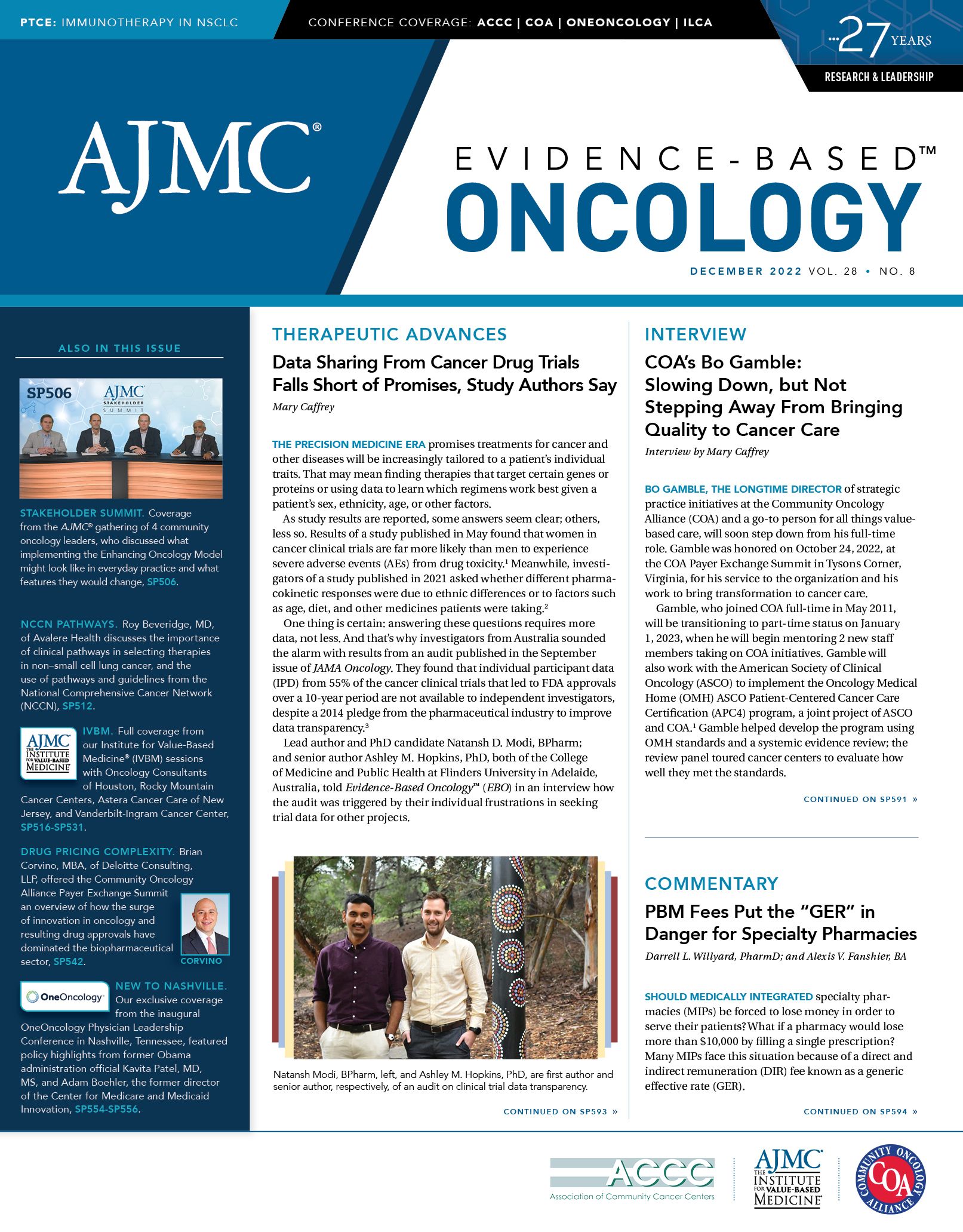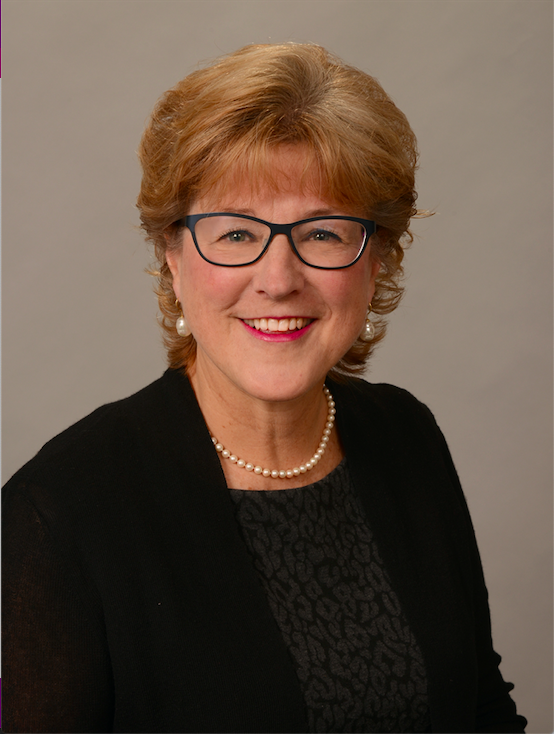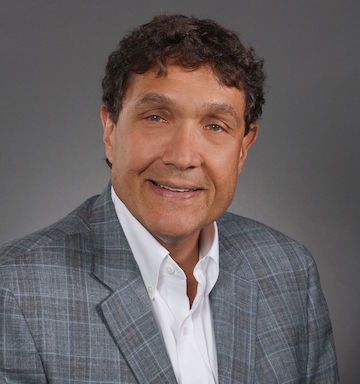Publication
Article
Evidence-Based Oncology
Dr Alexander Spira on Unmet Needs, Treatments for KRAS-Mutated NSCLC
Alexander Spira, MD, PhD, a medical oncologist and director of VCS Research Institute & Phase I Trial Program, Virginia Cancer Specialists, discusses unmet needs and treatment with KRAS-mutated non–small cell lung cancer (NSCLC).
Performing next-generation sequencing (NGS) for patients with non–small cell lung cancer (NSCLC) is critical to match them to the right targeted therapy at the right time, especially as new treatment options are being discovered, explained Alexander Spira, MD, PhD, medical oncologist and director of VCS Research Institute & Phase I Trial Program at Virginia Cancer Specialists. Spira spoke with Evidence-Based Oncology™ (EBO) earlier this fall.
This interview is lightly edited for clarity.
EBO: What unmet needs exist in the treatment of KRAS-positive NSCLC?
Spira: We’ve known about KRAS-mutated NSCLC for a long time, and no treatments have worked, unfortunately. Everybody’s been putting a lot of time and energy into this because it represents about 30% of [NSCLC]. Over the last 12 months, we’ve seen the approval of 1 drug, sotorasib, and likely a second drug later this year, called adagrasib, that will be approved for KRAS G12C lung cancer. That represents a lot of patients—a total of about 12% to 15% of all lung cancer patients. It’s a huge population, so it’s really good news for them. However, we need new KRAS inhibitors. Again, KRAS-mutated lung cancer represents about 30% of patients, but large percentage of patients still don’t have any treatments. We need a lot more treatments for them.
EBO: What are the guidelines around KRAS molecular testing and treatment selection in advanced NSCLC?
Spira: Now, with the approval of KRAS G12C drugs, everybody should be tested. And ideally, they’ll be tested up front, because (a) it’s nice to get all the information about all our biomarkers, and (b) a lot of clinical trials are out there for patients, as we all know. We need to find patients for all these different mutations. Everybody should be checked at the outset, but certainly before second-line therapy, which is where these KRAS G12C inhibitors are approved.
EBO: KRAS inhibitors occupy a second-line role in KRAS-positive NSCLC. When might these agents move to frontline therapy, if at all?
Spira: That’s a great question. These are currently being approved in the second-line setting, and a lot of clinical trials are now starting, and the randomized ones we believe will start later this year, in the frontline setting. There has been criticism, and rightfully so, that these targeted treatments in the second line do not work as well as the ones that we all know of, the EGFR [inhibitors] and the ALK [inhibitors], where the second-line responses are phenomenal. These are a different class of drugs: They’re GTPase inhibitors, not [tyrosine kinase inhibitors], and they just don’t work as well as the EGFR inhibitors, and that’s OK. We just need to do better. But with that in mind, there’s a lot of thought that patients might benefit more on the front line. And the real question is, which patient population? Some companies are looking at this vs chemotherapy; some are looking at it with immuno-oncology drugs. Those studies are ongoing right now, but we’re a few years away.
EBO: Are we potentially seeing patients fall through the cracks in situations where they have a KRAS mutation detected up front, and then it’s not necessarily being acted on after they fail first-line therapy?
Spira: Yes, not everybody has been checked. If you have somebody in the middle of the frontline therapy, if you haven’t checked, that tissue may be exhausted. That’s why it’s so important to do full NGS panels, because we’ve seen the evolution over 10 years where we have multiple drugs now that are approved that were not available before. So that’s great. Also, I think we will see more of these drugs in the frontline setting, and everybody should be checking for this right at the outset. Because, again, if you don’t know that they have a mutation, you’re not going to remember to check down the line. Probably a lot of patients in our clinic have this mutation who have never been checked, or even [if] the result is there, you just can’t find it in your [electronic medical record] because you didn’t realize the patient was tested a year-and-a-half ago.
EBO: How do you anticipate the treatment of KRAS mutations in NSCLC will evolve over time?
Spira: I think we’ll see a lot of efforts to get these into the frontline setting, which is very important. I also think there will be combinations. A lot of [research is being] done—with SHP2 inhibitors, SOS1, for example. So, I think we’ll also be looking at combinations, and the first step is obviously to [study combinations] in patients who progress on a KRAS G12C inhibitor. But then secondarily looking at moving these upfront. So, can you do combinations? Because admittedly the response rates and the duration of responses are not as good. I think the other exciting thing is this [development] has really invigorated KRAS research. Forget about just KRAS G12C—we have in clinical study here 3 KRAS G12D inhibitors. A lot of new drugs are being looked at right now for different KRAS mutations, and it’s really reinvigorated this [part of the research] world.
EBO: What are you working on in NSCLC that you are excited to share?
Spira: No. 1 would be a lot of these new KRAS-specific studies; I think we’re seeing a lot of new targeted therapies. And No. 2, a lot of new immuno-oncology combinations. A lot of new, just phenomenal things are coming up. Angiotensin antibodies are being looked at. Some of those studies were negative, but it’s endless. We’re now looking at benign cellular therapies as well. It’s great.
EBO: Do you have any closing thoughts regarding KRAS-positive NSCLC to share with our audience?
Spira: Clinical trials are always number 1, always clinical trials. I think [they’re] great. And second, make sure you’re doing full NGS panels on your patients. You can’t put patients on a targeted therapy unless you know they have a mutation.



